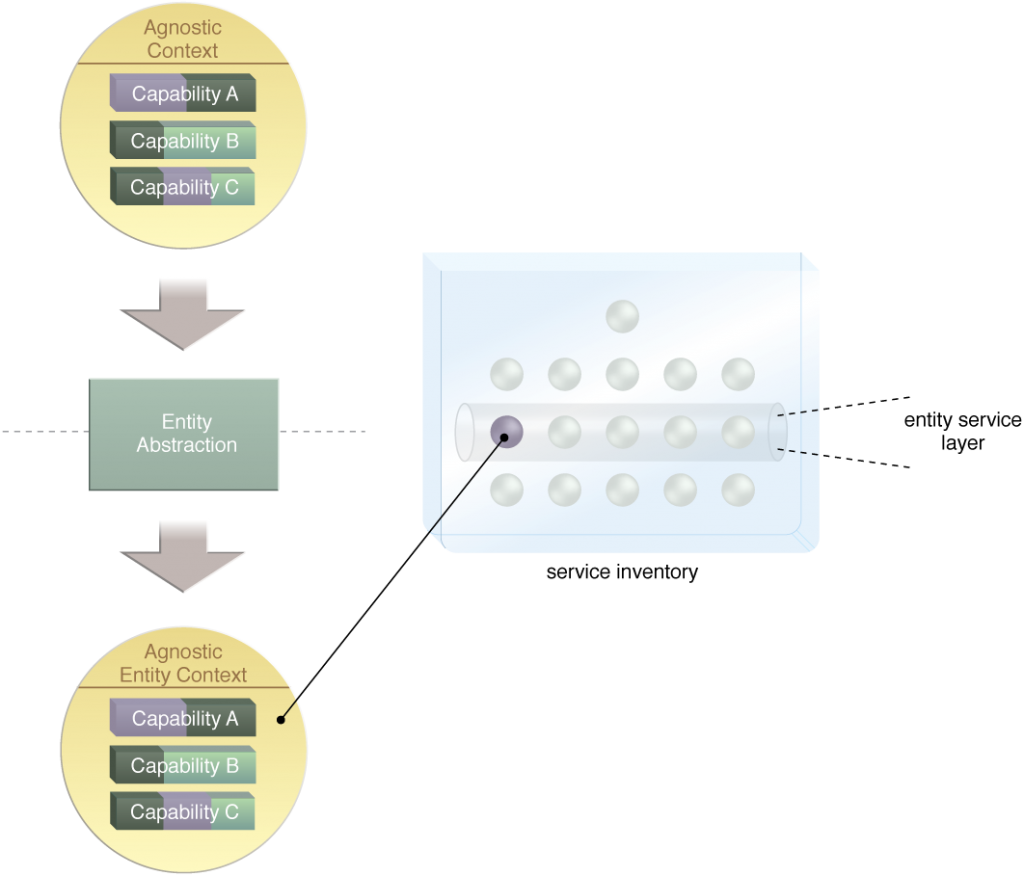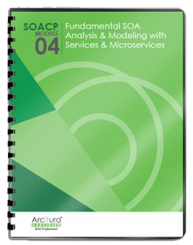SOA Patterns > Logical Inventory Layer Patterns > Entity Abstraction
Entity Abstraction (Erl)
How can agnostic business logic be separated, reused, and governed independently?

Problem
Bundling both process-agnostic and process-specific business logic into the same service eventually results in the creation of redundant agnostic business logic across multiple services.
Solution
An agnostic business service layer can be established, dedicated to services that base their functional context on existing business entities.
Application
Entity service contexts are derived from business entity models and then establish a logical layer that is modeled during the analysis phase.
Impacts
The core, business-centric nature of the services introduced by this pattern require extra modeling and design attention and their governance requirements can impose dramatic organizational changes.
Architecture
Inventory, Composition, Service

A layer of entity services, each of which encapsulates processing associated with a specific business entity (or a group of related entities).
Related Patterns in This Catalog
Agnostic Context, Agnostic Sub-Controller, Canonical Expression, Concurrent Contracts, Legacy Wrapper, Logic Centralization, Metadata Centralization, Process Abstraction, Redundant Implementation, Rules Centralization, Service Decomposition, Service Layers, Validation Abstraction
Related Service-Oriented Computing Goals
Increased Business and Technology Alignment, Increased ROI, Reduced IT Burden
This pattern is covered in SOACP Module 4: Fundamental SOA Analysis & Modeling with Services & Microservices.
For more information regarding the SOA Certified Pofessional (SOACP) curriculum,
visit www.arcitura.com/soa.
This page contains excerpts from:
SOA Design Patterns by Thomas Erl
(ISBN: 0136135161, Hardcover, Full-Color, 400+ Illustrations, 865 pages)
For more information about this book, visit www.arcitura.com/books.

